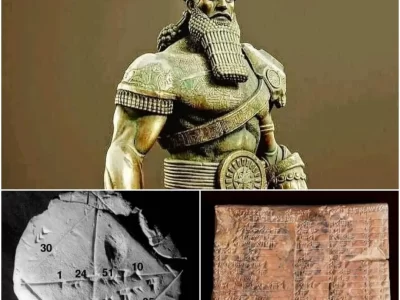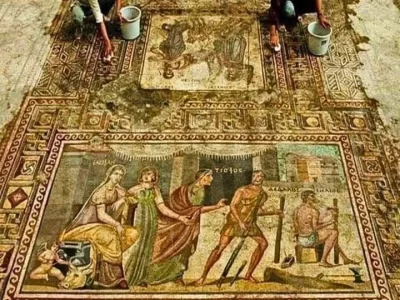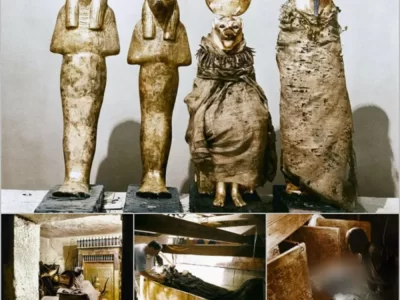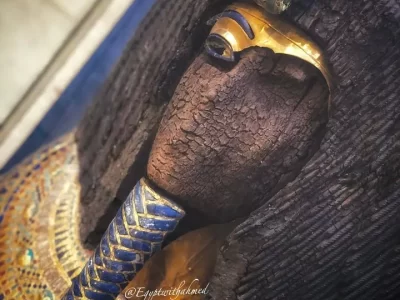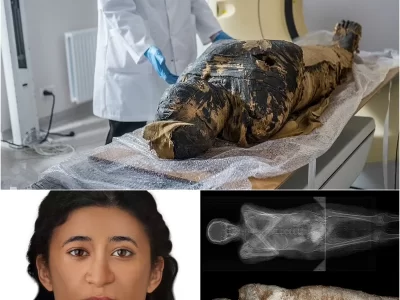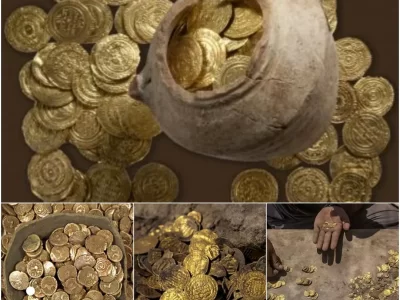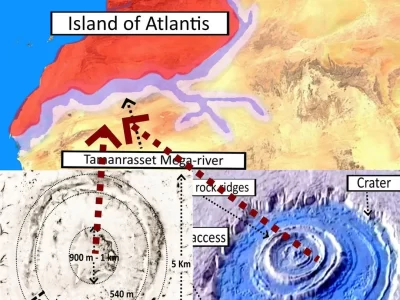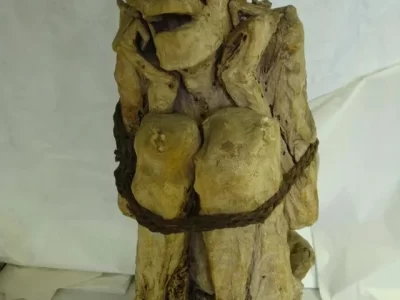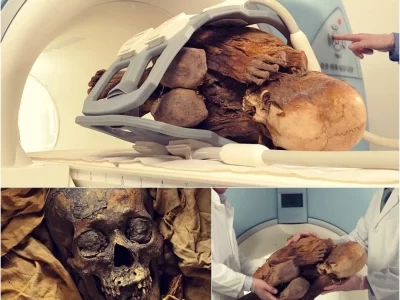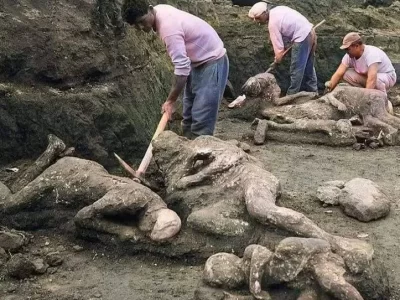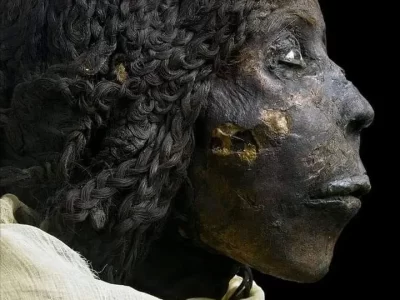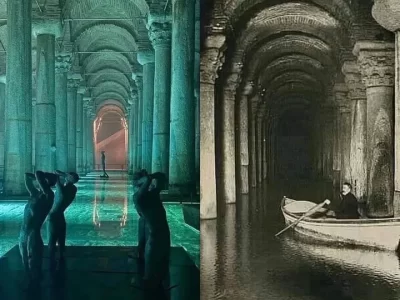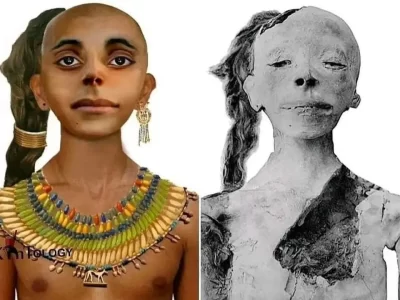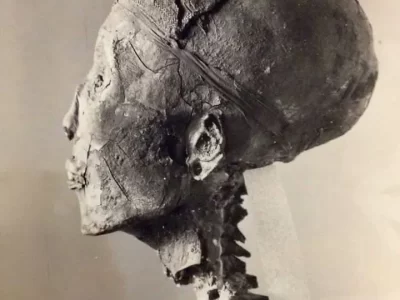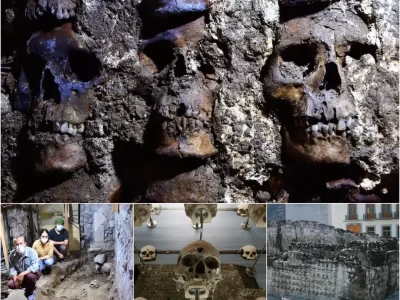16/11/2023 By Kane Khanh
Ancient Egypt and Archaeology Web Site Has Akhenaten’s body been found..? Article was written in reply to an e-mail asking if Akhenaten’s body has been found and was there any relationship to a coffin in the Cairo Museum. There hasn’t been any major change in the last decade and his final resting place is still unknown. Joann Fletcher published a theory about Nefertiti’s body, but this has received very mixed review – mainly because of the unorthodox way the information was released. It remains one of those tantalizing questions in Egyptology. Tutankhamun’s rapid move from Aten to Amun was no doubt dictated by political expediency (or maybe as a necessity for survival within a tarnished and fragile dynasty). I personally do not feel that the erasure of Aten from temples etc would have extended into desecration of the person (which would be very much against Ma’at) – but this was clearly a dramatic time in Egyptian history. TombDuring the re-excavation of the royal tomb at Amarna it was found that blocking had been put in place in the burial chamber, suggesting that Akhenaten was buried there initially and then removed. Others do not believe that the tomb was used. However, in view of the heavily smashed fragments of his sarcophagus and canopic jars recovered from it and also the shattered examples of his ushabtis, it seems very likely to be his Amarna tomb. Amongst the distinctly 18th Dynasty jewellery found cached outside the Royal Tomb at Amarna the small gold ring with Nefertiti cartouche is significant. What is almost certain is that his body didn’t remain at Amarna. It’s unlikely that Akhenaten’s adherents would have left his body to be despoiled by his enemies once his death and the return to orthodoxy unleashed a backlash of destruction. A strong contender for his post-Amarna resting place is tomb KV55 in the Valley of the Kings.KV55 is cut into the floor of the main valley between the resthouse and KV6 Rameses IX (Neferkara Setepenra, ruled 1126-1108 bc). It’s a very simple tomb with an entryway followed by a single corridor leading directly into burial chamber (with a side chamber). KV55 was probably excavated at the same time as KV46 and KV62. An ostracon painted with what may be part of the original tomb plan was found in KV55 in 1993 when the tomb was cleared by Lyla Pinch Brock. It may show indications of the widening of the entrance, a feature also suggested by mason’s marks on the wall near the tomb entrance. Marks on the walls indicate that, after the entrance and stairs were cut, the entrance was enlarged, the ceiling raised, and the number of stairs increased. The walls and ceiling in the burial chamber were plastered but undecorated. Objects span a range of rulers from Amenhotep III (Nebmaatra, ruled 1390-1352 bc) to Tutankhamun (Nebkheperura, ruled 1336-1327 bc).KV55 was originally sealed with blocks of limestone plastered with mortar and stamped with the seal of the necropolis. When this was broken through, rubble fill was inserted in the corridor. An attempt seems to have been made to remove the remaining burial equipment sometime after this event. It was resealed with rough blocking (during 20th Dynasty) as were other tombs in the area, but this blocking did not remain in place. This appears to be a cache of burial equipment and human remains from the Amarna royal necropolis. The tomb may originally have contained a number of burials brought from Amarna and later redistributed in other tombs. The mummy of Queen Tiye, for instance, may have been placed in KV55 and later in the KV35 Amenhotep II cache (Aakheperura, ruled 1427-1400 bc). It appears that when the tomb KV6 Rameses IX was cut just north of KV55, debris was dumped over the entrance to KV55. Analyses of the assortment of objects found in the tomb have contributed to several theories concerning the use and owner of KV55 – including a set of canopic jars now housed in New York and Cairo: For more information on canopic jars in this set housed in the Cairo Museum, click here. For more information on the one housed in the Metropolitan Museum in New York click here. Coffin A coffin was found in KV55 in 1907 by Edward Ayrton (funded by Theodore M. Davis). All the objects were removed by 1908 and it was protected by a steel door – this later disappeared, to be replaced by a stone blocking, which by 1944 had collapsed. The entrance of the tomb then began to fill with debris. In 1993, Lyla Pinch Brock cleared the tomb, and in 1996 repaired the plaster in the burial chamber.The coffin has a commoners wig but has been fitted with a beard and uraeus (strong indication of a royal). After burial the uraeus and gold face mask were torn away. The coffin’s design was for a woman and the hieroglyphs were intended to be spoken by a lady “the beloved on Akhenaten”. However, the inscriptions had been changed from feminine to masculine and the name changed to a cartouche – which was subsequently erased. It is thought to have been originally prepared for Kiya and then adapted for use by someone else. Kiya was another of Akhenaten’s royal wives and she was possibly mother to his successors, Smenkhkara and Tutankhamun.BodyThe mummy was unwrapped in the KV55, it was superficially intact but had suffered major water damage and after the bandages were taken off only bare bones remained. It was initially identified as a woman, possibly because Theodore Davis was keen to have found Queen Tiy. However, most agree that it is a male because of the narrow pelvis. The age is more of a problem. Up until 1960 there was general agreement that it was the remains of a male of no more than 25 years old (because bones showed un-fused epiphyses and un-erupted upper 3rd molar) – and of a similar rare blood group as Tutankhamun and Thuyu. Since then the age has been revised to a person as young as 18, with a skull similar to both Tutankhamun and Tuthmosis IV and a close relative to Tutankhamun. Logically this would put the body as either father, son or brother to Tutankhamun – the person best fitting this is Neferneferuaten (Smenkhkara, ruled 1338-1336 bc). It is romantic to imagine Tutankhamun giving his elder brother a burial appropriate to his position and away from Amarna.
